Themed collection 2023 Inorganic Chemistry Frontiers Review-type Articles

Does it mix? Insights and attempts to predict the formability of single phase mixed A-cation lead iodide perovskites
Current data suggest that radii and N–H bonds control the solubility and phase segregation in mixed A-cation lead iodide perovskites.

Inorg. Chem. Front., 2023,10, 6129-6133
https://doi.org/10.1039/D3QI01615C
Electrifying synthesis of organosilicon compounds – from electrosynthesis to electrocatalysis
Organosilicon compounds via electrosynthesis – the recent developments and further challenges.
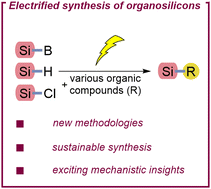
Inorg. Chem. Front., 2023,10, 1382-1394
https://doi.org/10.1039/D2QI02713E
Tin as a co-catalyst for electrocatalytic oxidation and reduction reactions
Tin (Sn) as a co-catalyst exerts a substantial influence on multiple electrocatalytic reactions. Delving into Sn's role in electrocatalysts and pioneering novel strategies have an immense impact for green synthesis and energy production.

Inorg. Chem. Front., 2024,11, 1019-1047
https://doi.org/10.1039/D3QI02010J
Hydrogen storage as liquid solar fuels
This review article focuses on catalytic interconversion between hydrogen and liquid or solid solar fuels using metal complexes as redox catalysts.

Inorg. Chem. Front., 2024,11, 981-997
https://doi.org/10.1039/D3QI02239K
Highly efficient tungsten/molybdenum-based electrocatalysts for the oxygen reduction reaction: a review
The mechanisms, synthesis methods and strategies for application of W/Mo-based ORR electrocatalysts are briefly introduced. Recent advances in W/Mo-based ORR electrocatalysts are discussed in detail.

Inorg. Chem. Front., 2024,11, 682-712
https://doi.org/10.1039/D3QI01797D
Organelle imaging with carbon dots: strategies, challenges, and perspectives
Organelle imaging is an efficient approach to gain information about intracellular events and dynamics of subcellular structures.
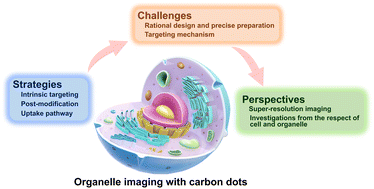
Inorg. Chem. Front., 2024,11, 713-734
https://doi.org/10.1039/D3QI02145A
The role of high-resolution transmission electron microscopy and aberration corrected scanning transmission electron microscopy in unraveling the structure–property relationships of Pt-based fuel cells electrocatalysts
Exploring the nanostructures of platinum-based fuel cell electrocatalysts through the lens of advanced transmission electron microscopy techniques unveils the secrets of structure-activity-stability relationships.

Inorg. Chem. Front., 2024,11, 323-341
https://doi.org/10.1039/D3QI01998E
The chemistry of the s- and p-block elements with 2,2′:6′,2′′-terpyridine ligands
The manifold chemistry of terpyridine (tpy) ligands with main-group elements is reviewed not only to provide an overview on this topic but to also inspire intensified research in this often disregarded field.

Inorg. Chem. Front., 2024,11, 342-399
https://doi.org/10.1039/D3QI01245J
The multiple roles of rare earth elements in the field of photocatalysis
The role and classification of rare earth elements in photocatalysts are summarized, with the aim of providing suggestions for the future development of rare earth photocatalysts.

Inorg. Chem. Front., 2024,11, 11-28
https://doi.org/10.1039/D3QI02006A
Local structural environment of single-atom catalysts
In this review, we discuss the catalytically active sites of single-atom catalysts regulated by modulating the metal single-atoms and coordination environment, as well as summarizing major challenges and development opportunities for the field of SACs.

Inorg. Chem. Front., 2024,11, 29-49
https://doi.org/10.1039/D3QI01576A
Towards scalability: progress in metal oxide charge transport layers for large-area perovskite solar cells
In this review article, we aim to offer a focused overview of metal oxide CTLs for large-area PSCs, emphasizing recent advancements in deposition techniques, modification strategies, and their suitability for large-area device applications.

Inorg. Chem. Front., 2024,11, 50-70
https://doi.org/10.1039/D3QI01757E
The role of niobium in layered oxide cathodes for conventional lithium-ion and solid-state batteries
This review article highlights the advantages of niobium as a dopant and a coating constituent for improving cycling performance of layered Ni-rich oxide cathodes in liquid- and solid-electrolyte-based Li-ion batteries.

Inorg. Chem. Front., 2023,10, 7126-7145
https://doi.org/10.1039/D3QI01857A
Recent progress in the development of tin tungstate (α-SnWO4) photoanodes for solar water oxidation
Tin tungstate is an emerging complex oxide photoelectrode for solar water splitting. Here, recent developments in the material are thoroughly reviewed, summarizing its properties, different syntheses, limitations, modification strategies and outlook.

Inorg. Chem. Front., 2023,10, 7109-7125
https://doi.org/10.1039/D3QI01841E
Recent advances in electrocatalytic reduction of ambient CO2 toward high-value feedstock
The effects of climate change have arisen due to greenhouse gases emitted into the atmosphere, and the finite supply of fossil fuels will eventually be unable to support the needs of the petrochemical industry.

Inorg. Chem. Front., 2023,10, 7095-7108
https://doi.org/10.1039/D3QI01522J
Recent advances towards increasing the Pt utilization efficiency for hydrogen evolution reaction: a review
Pt, an ideal HER catalyst, is costly, hindering its use in wide-scale applications. Here, we discuss how advances to Pt alloys, heterostructures, and SACs improve Pt atomic utilization for HER, and how spectator ions and pH affect performance.

Inorg. Chem. Front., 2023,10, 6812-6848
https://doi.org/10.1039/D3QI01656K
Advances in research on the inhibitory effect of 3D current collector structures for lithium dendrites
The structural advantages and disadvantages of various 3D current collectors are summarized to provide suggestions for the future development of anode in lithium metal batteries.

Inorg. Chem. Front., 2023,10, 6767-6791
https://doi.org/10.1039/D3QI01290E
Abiotic transformations of nitrogen mediated by iron sulfides and related species from early Earth to catalyst design
In this review, we aim to systematically investigate the interaction of nitrogen species with iron sulfides and related materials, with the goal of understanding how abiotic processes may have contributed to the evolution of enzymes responsible for nitrogen transformations.

Inorg. Chem. Front., 2023,10, 6792-6811
https://doi.org/10.1039/D3QI01553J
The importance of second sphere interactions on single molecule magnet performance
Secondary interactions occur beyond the primary coordination sphere and can influence the performance of single molecule magnets (SMMs). This article highlights the role that secondary interactions play in the synthesis and performance of SMMs.

Inorg. Chem. Front., 2023,10, 6427-6439
https://doi.org/10.1039/D3QI01634J
Current progress in metal–organic frameworks and their derivatives for electrocatalytic water splitting
For electrocatalytic water splitting, MOFs can be optimized through structural modification, plane design and synergetic composite systems, and the annealing process further expands the types of MOF-based electrocatalytic materials.

Inorg. Chem. Front., 2023,10, 6489-6505
https://doi.org/10.1039/D3QI01468A
Investigating the role of oxygen vacancies in metal oxide for enhanced electrochemical reduction of NO3− to NH3: mechanistic insights
Ammonia (NH3) is a crucial chemical commodity used extensively in fertilizer production and as a renewable potential energy carrier.

Inorg. Chem. Front., 2023,10, 6440-6488
https://doi.org/10.1039/D3QI01536J
Molecular inspired electrocatalyst materials for environmental remediation
The increasing presence of chemical contaminants in the environment due to demands associated with a growing population and industrial development poses risks to human health due to their exposure.

Inorg. Chem. Front., 2023,10, 6160-6175
https://doi.org/10.1039/D3QI01248D
Challenges and advancement in direct ammonia solid oxide fuel cells: a review
This review discusses the challenges and recent advancements in direct ammonia solid oxide fuel cells for electricity generation in a single step to pave the way for developing kilowatt-scale technology and offering future recommendations.

Inorg. Chem. Front., 2023,10, 6176-6192
https://doi.org/10.1039/D3QI01557B
Recent progress in gas separation platforms based on hydrogen-bonded organic frameworks (HOFs)
Hydrogen-bonded frameworks (HOFs) are a new and appealing class of porous crystalline materials that are constructed from organic moieties through hydrogen bonding.

Inorg. Chem. Front., 2023,10, 6134-6159
https://doi.org/10.1039/D3QI00965C
Latest progress in proton-conducting hydrogen-bonded organic frameworks
The latest progress of proton-conductive HOFs in terms of preparation, structural characteristics, proton conductivity, and proton-conducting mechanism are presented. The future trends and design ideas are also highlighted and prospected.

Inorg. Chem. Front., 2023,10, 5856-5884
https://doi.org/10.1039/D3QI01473H
Designing Janus catalysts for renewable energy-relevant bifunctional small molecule activation
Developing bifunctional catalysts is critical for ensuring renewable energy applications via small molecule activation.

Inorg. Chem. Front., 2023,10, 5839-5855
https://doi.org/10.1039/D3QI00954H
Recent advances of metal oxide catalysts for electrochemical NH3 production from nitrogen-containing sources
This article summarizes recent advances in metal oxides catalyzed ammonia production via the electrocatalysis of N2 and nitrates. Critical challenges and future research directions to accomplish their potential industrialization are discussed.

Inorg. Chem. Front., 2023,10, 5812-5838
https://doi.org/10.1039/D3QI01448G
Recent progress and prospects of rare earth elements for advanced aqueous zinc batteries
We analyze the unique roles played by rare earth elements from the three perspectives of cathode, anode and electrolyte. We summarize their potential applications and rational optimization strategies towards electrodes, separators and electrolytes.
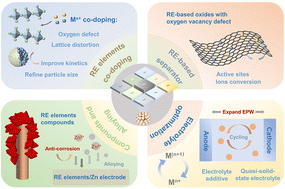
Inorg. Chem. Front., 2023,10, 5802-5811
https://doi.org/10.1039/D3QI01117H
Porous framework materials for stable Zn anodes in aqueous zinc-ion batteries
This review summarizes the recent research efforts on MOFs/COFs employed in Zn anodes of zinc-ion batteries (ZIBs) and analyzes the structure-property relationship to guide the rational design of MOFs/COFs for future ZIB applications.

Inorg. Chem. Front., 2023,10, 5555-5572
https://doi.org/10.1039/D3QI01222K
Recent advances in molybdenum diselenide-based electrocatalysts: preparation and application in the hydrogen evolution reaction
This review summarizes the preparation of MoSe2-based materials, their application in hydrogen evolution reaction (HER), the catalytic mechanism for improved HER performance, structure–performance correlations and the challenges in the future.

Inorg. Chem. Front., 2023,10, 5517-5554
https://doi.org/10.1039/D3QI00885A
An overview of Mg-based IR nonlinear optical materials
This review article provides an overview of Mg-based IR nonlinear optical materials including synthetic methods, structural chemistry, structure–activity relationships, current problems and future development.

Inorg. Chem. Front., 2023,10, 5244-5257
https://doi.org/10.1039/D3QI01144E
Single-ion magnetism behaviors in lanthanide(III) based coordination frameworks
Incorporating Ln(III) ions into coordination framework structures confers multifunctional properties such as single-ion magnetism, host–guest interactions, and more, which could have broad applications in diverse fields.

Inorg. Chem. Front., 2023,10, 5212-5224
https://doi.org/10.1039/D3QI00925D
Recent developments and prospects for engineering first-row transition metal-based catalysts for electrocatalytic NOx− reduction to ammonia
First-row transition metal-based electrocatalysts, including Cu, Fe, Co, Ni, and Ti-based electrocatalysts, for high-efficiency NOx− reduction are reviewed. These electrocatalysts should possess three advantages indicated in the figure above.

Inorg. Chem. Front., 2023,10, 5225-5243
https://doi.org/10.1039/D3QI01113E
Li2ZnTi3O8 anode: design from material to electrode and devices
Li2ZnTi3O8 anode has been widely reviewed with respect to material design, electrode design, and device construction design.
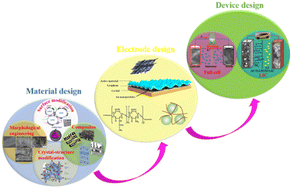
Inorg. Chem. Front., 2023,10, 4943-4980
https://doi.org/10.1039/D3QI00934C
Recent developments in Ti-based nanocatalysts for electrochemical nitrate-to-ammonia conversion
Electrochemical NO3−-to-NH3 conversion is an available option for sewage treatment and ammonia synthesis. This review summarized the theoretical insights, design strategy and challenges of Ti-based electrocatalysts for NO3−-to-NH3 conversion.

Inorg. Chem. Front., 2023,10, 4901-4917
https://doi.org/10.1039/D3QI00732D
Advances in the application of manganese dioxide and its composites for theranostics
This review summarizes recent advances in the application of manganese dioxide and its composites for theranostics.

Inorg. Chem. Front., 2023,10, 4918-4942
https://doi.org/10.1039/D3QI00978E
Bimetallic-based composites for potassium-ion storage: challenges and perspectives
Bimetallic-based compounds are regarded as promising anode materials. This review highlights design strategies of various bimetallic-based compounds and summarizes the latest research progress, challenges and prospectives for their applications in PIBs.

Inorg. Chem. Front., 2023,10, 4668-4694
https://doi.org/10.1039/D3QI00585B
Recent progress in ammonia synthesis based on photoelectrocatalysis
Photoelectrocatalytic NH3 synthesis from N2 and H2O is a promising approach for N-neutralization goal based on catalytic strategies, such as vacancy engineering, ion doping, frustrated Lewis pair design, heterojunction construction, etc.

Inorg. Chem. Front., 2023,10, 4650-4667
https://doi.org/10.1039/D3QI00683B
Recent advances and strategies of electrocatalysts for large current density industrial hydrogen evolution reaction
The urgent demand for sustainable energy resources has boosted research into highly efficient electrocatalysts for the hydrogen evolution reaction (HER).
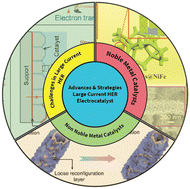
Inorg. Chem. Front., 2023,10, 4632-4649
https://doi.org/10.1039/D3QI00799E
Opportunities and challenges in aqueous nitrate and nitrite reduction beyond electrocatalysis
Nitrate (NO3−) and nitrite (NO2−) ions are common health-threatening contaminants in water. Thermal catalytic hydrogenation is a promising strategy to reduce nitrate and nitrite during water treatment.
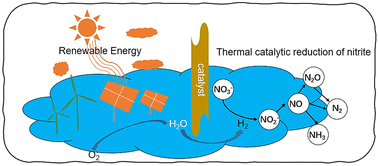
Inorg. Chem. Front., 2023,10, 4610-4631
https://doi.org/10.1039/D3QI00148B
Research progress of MXenes and layered double hydroxides for supercapacitors
In this study, the preparation methods of MXenes and layered dihydroxides (LDHs) are reviewed. In addition, the preparation and the electrochemical performances for supercapacitors of MXene/LDHs composites are summarized in detail.

Inorg. Chem. Front., 2023,10, 4358-4392
https://doi.org/10.1039/D3QI00819C
N-heterocyclic carbene-ligated metal complexes and clusters for photocatalytic CO2 reduction
N-heterocyclic carbenes are structurally versatile ligands, which have strong σ-donor properties to form covalent bonds with metal centers. This frontier article provides a review on active NHC-stabilized metal complexes and clusters for photocatalytic CO2 reduction.
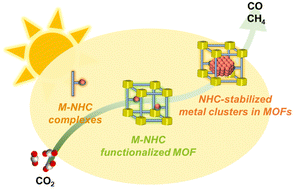
Inorg. Chem. Front., 2023,10, 4313-4321
https://doi.org/10.1039/D3QI00678F
Magnetic materials based on heterometallic CrII/III–LnIII complexes
Exchange interaction plays a pivotal role in dictating the single-molecule magnet (SMM) behaviour in heterometallic complexes. This review covers SMM and magnetocaloric effects of Cr(III)–Ln(III)-based heterometallic complexes.

Inorg. Chem. Front., 2023,10, 4322-4357
https://doi.org/10.1039/D3QI00193H
Microbial biosynthesis of quantum dots: regulation and application
The production of quantum dots by microorganisms is regulated by both intracellular and extracellular factors. Gaining a better understanding of the regulatory mechanism will facilitate the precise modulation of their properties.

Inorg. Chem. Front., 2023,10, 4008-4027
https://doi.org/10.1039/D3QI00688C
Halide perovskite photovoltaic-electrocatalysis for solar fuel generation
This review covers the principles and recent advances in photovoltaic-electrochemical fuel production. It suggests the structural, compositional, and interfacial engineering of OER, HER, bifunctional, CRR catalysts, and halide perovskite solar cells.

Inorg. Chem. Front., 2023,10, 3781-3807
https://doi.org/10.1039/D3QI00714F
Emerging heterostructured C3N4 photocatalysts for photocatalytic environmental pollutant elimination and sterilization
Photocatalysis is deemed a highly prominent technology to solve environmental problems such as pollution, CO2 emission and bacterial contamination.
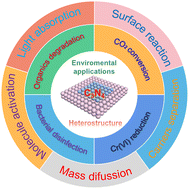
Inorg. Chem. Front., 2023,10, 3756-3780
https://doi.org/10.1039/D3QI00657C
Actinide-based single-molecule magnets: alone or in a group?
This review presents a survey of representative mononuclear and multinuclear actinide SMMs to look back at how far we have come, trying to seek out a feasible strategy for top-performing An-SMMs.

Inorg. Chem. Front., 2023,10, 3742-3755
https://doi.org/10.1039/D3QI00523B
Strategies to boost chemiresistive sensing performance of In2O3-based gas sensors: an overview
Morphologies oriented different composite materials of In2O3-based gas sensors.

Inorg. Chem. Front., 2023,10, 3428-3467
https://doi.org/10.1039/D3QI00099K
Recent progress and strategies on the design of catalysts for electrochemical ammonia synthesis from nitrate reduction
This review summarizes recent advancements in catalysts for NH3 electrosynthesis from NO3−, highlights various strategies to regulate their apparent or intrinsic activities, and proposes the perspective and challenges in this emerging area.

Inorg. Chem. Front., 2023,10, 3489-3514
https://doi.org/10.1039/D3QI00554B
Emerging trends in mesoporous silica nanoparticle-based catalysts for CO2 utilization reactions
Mesoporous silica nanoparticles (MSNs) have modifiable porous surfaces, can be easily modified/functionalized, and have good chemical/thermal stability; thus, they are promising candidates in the field of CO2 conversion/reduction reactions.

Inorg. Chem. Front., 2023,10, 3171-3194
https://doi.org/10.1039/D3QI00378G
Selective ethylene tetramerization: an overview
1-octene is used to produce linear low-density polyethylene (LLDPE), polyolefin elastomers (POE) etc. This review provides an overview of the history, recent advancements and future opportunities in selective ethylene tetramerization.

Inorg. Chem. Front., 2023,10, 2860-2902
https://doi.org/10.1039/D3QI00321C
Development and perspectives of multi-site electrocatalysts for neutral hydrogen evolution
This review offers an overview of the design principles, progress, and perspectives of applying multi-site electrocatalysts for the HER in neutral media.

Inorg. Chem. Front., 2023,10, 2842-2859
https://doi.org/10.1039/D3QI00171G
A comprehensive review of carbon anode materials for potassium-ion batteries based on specific optimization strategies
This review mainly focuses on the discussion of mechanisms behind improved potassium storage properties, starting from some specific optimization strategies, and presents a perspective for the further development of carbon anodes.

Inorg. Chem. Front., 2023,10, 2547-2573
https://doi.org/10.1039/D3QI00056G
Mechanisms of Mg carbonates precipitation and implications for CO2 capture and utilization/storage
The precipitation of anhydrous Mg carbonates is hindered by the high energy barrier for dehydrating Mg2+ cations, and the mechanisms involved (classical or non-classical crystallization) in their precipitation remains as a scientific gap.

Inorg. Chem. Front., 2023,10, 2507-2546
https://doi.org/10.1039/D2QI02482A
Diruthenium(II,III) paddlewheel complexes: effects of bridging and axial ligands on anticancer properties
Diruthenium(II,III) paddlewheel carboxylates combine the pharmacological properties of the dimetallic center with those ascribed to the μ-bridged carboxylates, thus leading to novel, dual-acting anticancer metallodrugs.

Inorg. Chem. Front., 2023,10, 2226-2238
https://doi.org/10.1039/D3QI00157A
Recent progress in polyoxometalate–viologen photochromic hybrids: structural design, photochromic mechanism, and applications
Polyoxometalate–viologen hybrids are reviewed, including structural design, competing electron transfer process, and new knowledge on photochromic mechanisms and their applications.

Inorg. Chem. Front., 2023,10, 1965-1985
https://doi.org/10.1039/D3QI00040K
Prospect of Ru(edta) complexes in nitrogen cycle electrocatalysis: a mini review
This mini review chronicles the role of Ru(edta) (edta4− = ethylenediaminetetraacetate) towards catalysing the electrochemical transformation of nitrogen cycle reactions, elucidating the complex mechanistic schemes.

Inorg. Chem. Front., 2023,10, 1958-1964
https://doi.org/10.1039/D3QI00199G
Latest progress in asymmetrically functionalized Anderson-type polyoxometalates
Asymmetrically functionalized Anderson-type polyoxometalates were overviewed, including the key factors of various synthesis methods, separation methods, advantages of asymmetric structures, and their applications.

Inorg. Chem. Front., 2023,10, 1695-1711
https://doi.org/10.1039/D2QI02690B
Recent developments of core–shell structured catalysts for the selective catalytic reduction of NOx with ammonia
Recent developments in syntheses strategies, catalytic performance as well as structure–property relationships of core–shell structured catalysts for NH3-SCR of NOx with improved low-temperature activity and poisoning tolerance is surveyed.

Inorg. Chem. Front., 2023,10, 727-755
https://doi.org/10.1039/D2QI02106D
Recent advances in surface reconstruction toward self-adaptive electrocatalysis: a review
Self-adaptive electrocatalysis of inorganic materials was proposed and its origin, basic principles, and recent advances were discussed toward the fabrication of self-adaptive cycles for sustainable electrocatalysis.
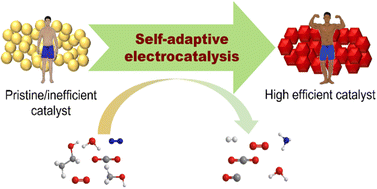
Inorg. Chem. Front., 2023,10, 352-369
https://doi.org/10.1039/D2QI02256G
Electrode/electrolyte additives for practical sodium-ion batteries: a mini review
Problems of practical sodium-ion batteries.

Inorg. Chem. Front., 2023,10, 37-48
https://doi.org/10.1039/D2QI02237K
Regulation strategy of white emission from organic–inorganic hybrid metal halide perovskites
In this review, the structure, photophysical properties, and white-light mechanism of organic–inorganic hybrid metal halide perovskites with white emission are summarized, with an emphasis on the adjustment strategy for white-light performance.

Inorg. Chem. Front., 2023,10, 13-36
https://doi.org/10.1039/D2QI02076A
Distinct electronic effects of borane– and boryl–nickel complexes for catalyzing H2 activation
Electrophilic borane and nucleophilic boryl transition metal catalysts for H2 activation.
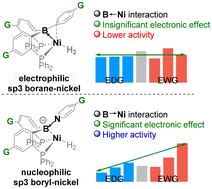
Inorg. Chem. Front., 2023,10, 6928-6935
https://doi.org/10.1039/D3QI01561K
Group 14 metallole dianions as η5-coordinating ligands
The coordination chemistry of group 14 metallole dianions, compared to monoanionic cyclopentadienides, is underexplored. This perspective reviews η5-coordination in group 14 metallole dianions, revealing their potential in organometallic chemistry.

Inorg. Chem. Front., 2023,10, 5509-5516
https://doi.org/10.1039/D3QI01342A
Single-atom nanozymes as promising catalysts for biosensing and biomedical applications
Single-atom nanozymes represent a unique class of enzyme mimics that exhibit maximal atomic utilization, a well-defined electronic/geometric structure, and high catalytic activity, and have found diverse applications in biomedicine and biosensing.
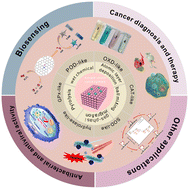
Inorg. Chem. Front., 2023,10, 4289-4312
https://doi.org/10.1039/D3QI00430A
Nanoarchitectonics for inorganic chemistry frontiers
This short article discusses nanoarchitectonics as a frontier in inorganic chemistry as exemplified by high entropy alloys, quasi-subnanometer-sized particles, probe-manipulated nanomaterials, and interfacial-processed nanofilms.

Inorg. Chem. Front., 2023,10, 3165-3170
https://doi.org/10.1039/D3QI00632H
Parsing the basic principles to build efficient heterostructures toward electrocatalysis
This Chemistry Frontiers article systematically parses the inherent principles of universal component selection strategies, catalytic mechanisms, and structure–activity relationships for novel heterostructural electrocatalysts.

Inorg. Chem. Front., 2023,10, 2220-2225
https://doi.org/10.1039/D3QI00117B
The trianionic hydrazido radical (N2)3−: a promising platform for transforming N2
A quintessential approach to activate and functionalize the exceptionally stable diatomic nitrogen (N2) consists of its coordination to transition metal complexes.

Inorg. Chem. Front., 2023,10, 1952-1957
https://doi.org/10.1039/D2QI02543D
The art of compartment design for synthetic catalysts
Compartmentalization of catalysts has potential to become a powerful synthetic tool, however, further work in understanding its fundamental principles is required. Herein, those principles are elucidated through the lens of biomimicry.
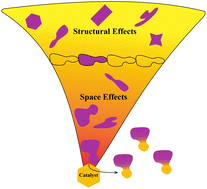
Inorg. Chem. Front., 2023,10, 1402-1410
https://doi.org/10.1039/D2QI02332F
Transition-metal phosphors with emission peak maximum on and beyond the visible spectral boundaries
Third-row transition-metal complexes displaying efficient true-blue (∼460–470 nm) and near infrared (∼700–1000 nm) emissions were strategically analyzed.
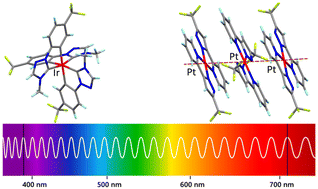
Inorg. Chem. Front., 2023,10, 1395-1401
https://doi.org/10.1039/D2QI02449G
About this collection
Critical reviews, highlights and chemistry frontiers articles published in Inorganic Chemistry Frontiers during 2023 are collated as below for the benefit of readers.